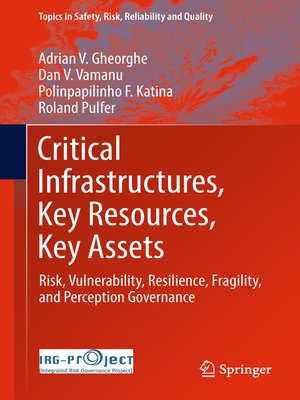Critical Infrastructures, Key Resources, Key Assets
ebook ∣ Risk, Vulnerability, Resilience, Fragility, and Perception Governance · Topics in Safety, Risk, Reliability and Quality
By Adrian V. Gheorghe

Sign up to save your library
With an OverDrive account, you can save your favorite libraries for at-a-glance information about availability. Find out more about OverDrive accounts.
Find this title in Libby, the library reading app by OverDrive.



Search for a digital library with this title
Title found at these libraries:
| Library Name | Distance |
|---|---|
| Loading... |
In the face of increasing failures, comments attributed to Albert Einstein loom large: "We cannot solve our problems with the same thinking we used when we created them." There is a pervasive feeling that any attempt to make sense of the current terrain of complex systems must involve thinking outside the box and originating unconventional approaches that integrate organizational, managerial, social, political, cultural, and human aspects and their interactions.
This textbook offers research-based models and tools for diagnosing and predicting the behavior of complex techno-socio-economic systems in the domain of critical infrastructures, key resources, key assets and the open bazaar of space, undersea, and below-ground systems. These models exemplify emblematic models in physics, within which the critical infrastructures, as well as society itself and its paraphernalia, share the profile of many-body systems featuring cooperative phenomena and phase transitions – the latter usually felt as disruptive occurrences.
The book and its models focus on the analytics of real-life-business actors, including policy-makers, financiers and insurers, industry managers, and emergency responders.
This textbook offers research-based models and tools for diagnosing and predicting the behavior of complex techno-socio-economic systems in the domain of critical infrastructures, key resources, key assets and the open bazaar of space, undersea, and below-ground systems. These models exemplify emblematic models in physics, within which the critical infrastructures, as well as society itself and its paraphernalia, share the profile of many-body systems featuring cooperative phenomena and phase transitions – the latter usually felt as disruptive occurrences.
The book and its models focus on the analytics of real-life-business actors, including policy-makers, financiers and insurers, industry managers, and emergency responders.







